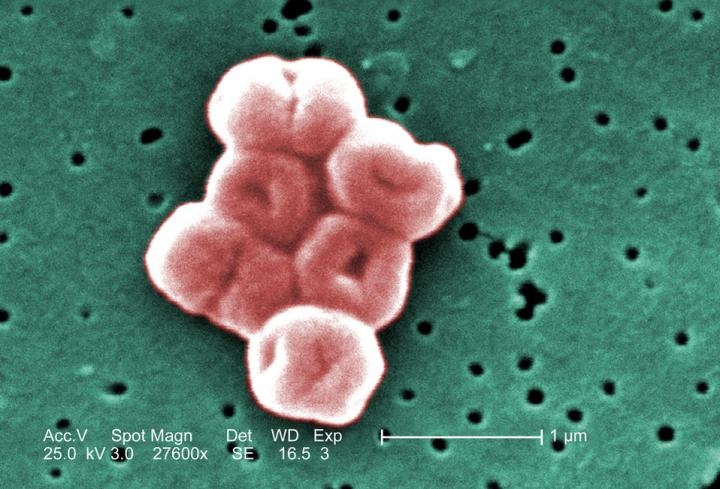Aug 13 2019
A new study by Australian and UK researchers has shown that the molecular mechanism used by bacteria to combat against chemicals developed to destroy them can facilitate the synthesis of precursors for the production of next-generation nylon and other polymers.
 This is a highly magnified cluster of Acinetobacter baumannii bacteria, which uses a protein pump to resist the powerful hospital-grade antiseptic, chlorhexidine. (Image credit: Public Health Image Library)
This is a highly magnified cluster of Acinetobacter baumannii bacteria, which uses a protein pump to resist the powerful hospital-grade antiseptic, chlorhexidine. (Image credit: Public Health Image Library)
“Resistance to artificial antiseptics appears to be a lucky accident for the bacteria, and it could also be useful for humans,” stated Professor Ian Paulsen of Macquarie University, Australia, one of the leaders of the research team.
Although superbugs—bacteria that are resistant to antiseptics and antibiotics—have been a serious issue, how they develop resistance to artificial antiseptics is not yet understood exactly.
In 2013, Paulsen and his team found the resistance of Acinetobacter baumannii against chlorhexidine, a powerful hospital-grade antiseptic, which is on the World Health Organization’s list of “essential medicine.”
They found that AceI protein was the key weapon of A. baumannii. This protein binds to the surface of A. baumannii and empties any chlorhexidine that enters. This seems to be amazing as the protein has been around for much longer than the antiseptic.
The gene that encodes the AceI protein appears to be very old, but chlorhexidine was only created in the twentieth century. So the gene can’t have the native function of protecting against chlorhexidine. It’s a side reaction that is fortunate for the bacteria.
Dr Karl Hassan, Study Lead Author, The University of Newcastle, Australia
Hassan, Paulsen, and coworkers have also analyzed what other compounds are transferred by AceI and its associates, together called proteobacterial antimicrobial compound efflux (PACE) proteins.
They discovered both positive and negative aspects of PACE proteins. The negative aspect was that PACE proteins are expected to be future drivers of antimicrobial resistance. The positive aspect was that their potential to transfer a broad array of substances shows that they could be effectively reused in industries for the catalytic synthesis of “petroleum-free” polymers like nylon.
These PACE proteins are very promiscuous in the compounds that they transport and are a likely cause of future resistance to new antimicrobials that are currently being developed.
Peter Henderson, Professor and Senior Researcher, University of Leeds